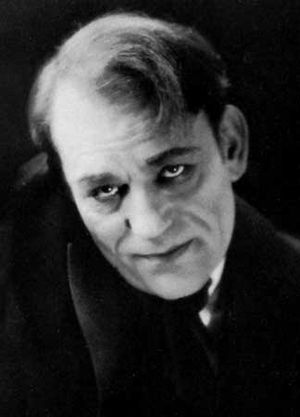Lon Chaney
Our editors will review what you’ve submitted and determine whether to revise the article.
- Original name:
- Leonidas Frank Chaney
- Born:
- April 1, 1883, Colorado Springs, Colorado, U.S.
- Died:
- August 26, 1930, Los Angeles, California
- Also Known As:
- Leonidas Frank Chaney
Lon Chaney (born April 1, 1883, Colorado Springs, Colorado, U.S.—died August 26, 1930, Los Angeles, California) was an American film actor whose versatility and moving performances in even the most macabre roles are classics of the silent screen. He is perhaps best known for his performances in The Hunchback of Notre Dame (1923) and The Phantom of the Opera (1925).
(Read Chaney’s 1929 Britannica essay on makeup.)
Chaney’s skills as a silent-film actor were honed during his childhood, when he learned to communicate with his deaf parents through facial expression, pantomime, and sign language. As a youth, he worked several odd jobs before turning to acting at age 19 in a play he cowrote with his brother. After a few years of touring with the show to only moderate success, Chaney met actress-singer Cleva Creighton in 1905; the two married and toured together with their son, Creighton. Chaney eventually found more steady work on his own as an actor, stage manager, and choreographer, but his stage career was derailed when Cleva’s suicide attempt in 1913 and their subsequent divorce created a public scandal. It was in the same year that Chaney made his debut in motion pictures, the medium in which he became a legend.

(Read Lillian Gish’s 1929 Britannica essay on silent film.)
Beginning in films as an extra and bit player, Chaney had an important supporting role in Hell Morgan’s Girl (1917); two years later his role in The Miracle Man (1919) made him a star. During the next 10 years Chaney earned a reputation as one of the finest character actors in films. He became equally renowned for his skill with makeup (even writing on the topic for the 14th edition of Encyclopædia Britannica), a talent he developed because he thought his own features were too ordinary for a star performer. The characters he portrayed were diverse and often macabre, but they were unfailingly moving and poignant due to Chaney’s ability to convey a basic decency beneath a grotesque exterior.
Chaney often endured physical pain in order to achieve the appearance he desired for a role. For example, he bound his legs into a tight harness—resulting in broken blood vessels—for his portrayal of Blizzard, a legless criminal mastermind, in The Penalty (1920). In one of his most famous films, The Hunchback of Notre Dame (1923), Chaney wore a 50-pound hump on his back, a fleshy covering over one eye, and prosthetics that grossly exaggerated his cheekbones, nose, and lips. Perhaps Chaney’s most famous makeup creation was for The Phantom of the Opera (1925), in which he portrayed the deformed opera-house denizen. Other well-known Chaney roles that helped earn him the nickname “Man of a Thousand Faces” included the dual role of police inspector and vampire in London After Midnight (1927; now lost); a Chinese Mandarin in Mr. Wu (1927); an armless knife thrower in The Unknown (1927); and a clown in Laugh Clown Laugh (1928). Yet he was much more than an actor who hid behind layers of makeup, as was amply demonstrated in his acclaimed “straight” performances in films such as Tell It to the Marines (1927), While the City Sleeps (1928), and Thunder (1929). Many of Chaney’s films during this period were directed by Tod Browning, a specialist in the macabre and bizarre.
Chaney, along with other silent-screen legends such as Charlie Chaplin, believed that sound films would destroy the art of pantomime, and he resisted talking roles until agreeing to reprise his role in The Unholy Three, made as a silent with Browning in 1925, as a talkie in 1930. Playing multiple roles and using five distinct character voices in the film, Chaney demonstrated that he was well suited to talkies. Unfortunately, he died suddenly of a throat hemorrhage less than two months after the film’s release.
Chaney’s legend was such that he retained a large cult following into the 21st century. His son, Creighton, also attained stardom, in the 1930s and ’40s after changing his name to Lon Chaney, Jr., and portraying notable horror roles for Universal Studios, in particular the title character in The Wolf Man (1941).





















